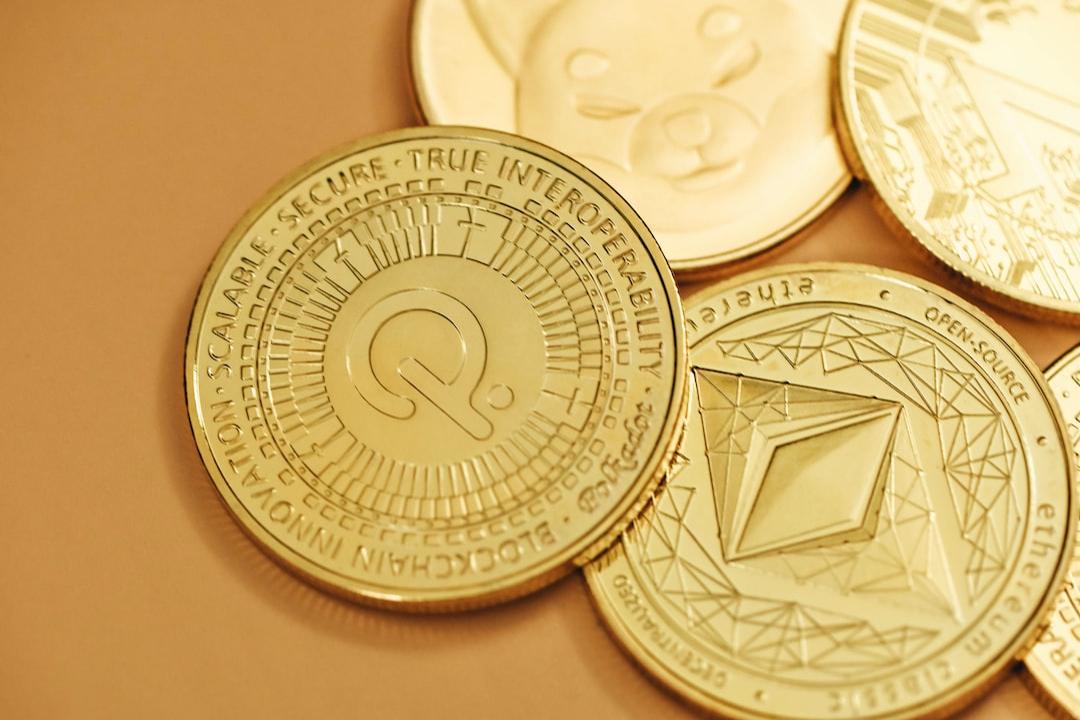How to Explore Ethereum and L2 Ecosystems Fully with OKX Web3 Wallet: Cancun Upgrade Initiates Era of Reduced Fees
On March 13th, according to OKLink data, Ethereum officially implemented the Dencun upgrade at block height 269,568, entering the era of low-cost Layer2. After cost reduction and efficiency improvement, can Ethereum make a comeback as the king?
Table of Contents
Toggle
Ethereum’s Progress Over the Years
Understanding the Cancun Upgrade
How to Explore Ethereum and L2 Ecology with OKX Web3 Wallet?
The Cancun Upgrade Injects Vitality into Ethereum and L2
Ethereum’s Progress Over the Years
Ethereum was officially launched on July 30, 2015, ushering in a new era of smart contracts. With the prosperity of on-chain applications such as DeFi and NFT Summer, Ethereum has shined brightly. However, it has also faced challenges due to the low gas competition from high-performance public chains like Solana and the suction effect of the Bitcoin ecosystem. Although Ethereum has attempted to reverse the situation with version 2.0, the long and complex technical iteration process has always led to unsatisfactory platform performance in the short term, with high gas fees being one of the key reasons for user migration.
The tremendous pressure on Ethereum’s congestion directly pushed forward the grand narrative of L2. Vitalik Buterin began to support various expansion solutions. In an article, he wrote profoundly, “Without the development of Layer2 and Rollup, Ethereum will fail due to high transaction costs.” Solving the “expensive and congested” performance problem has become the core theme of Ethereum’s current development. According to OKLink data, the TVL of L2 ecology has been continuously increasing, with a total TVL of $38.31 billion.
Advertisement – Continue reading to scroll down




Mainstream L2 solutions such as Arbitrum and Optimism all share the security of Ethereum. Although the computations are moved off-chain, the data will still be processed by Ethereum nodes and permanently stored on the expensive chain, and these costs are ultimately transferred to users. Therefore, L2 has alleviated the transaction pressure on Ethereum to a certain extent and reduced gas fees. However, compared to Web2 users who enjoy free usage, L2 has limitations in its effectiveness.
The success of the Cancun upgrade officially opens the era of reduced fees for L2, injecting new vitality into the L2 ecology and Ethereum. On March 15th, according to OKLink data, after the Cancun upgrade, the transaction fees on L2 networks such as Starknet and OP dropped by more than 90%, and their active addresses and TPS also significantly improved. As a leading one-stop Web3 gateway, the OKX Web3 wallet now fully supports Ethereum and L2 ecology, providing an important foundation for users to explore the on-chain world.


Source: OKLink
Understanding the Cancun Upgrade
The Cancun upgrade is a combination of the Ethereum execution client Cancun and the consensus client Deneb upgrades. The community habitually uses the Cancun upgrade to refer to the Dencun upgrade. The core purpose is to optimize the user experience of Ethereum staking and achieve cost reduction and efficiency improvement for L2. The Cancun upgrade includes a total of 9 Ethereum Improvement Proposals (EIPs), including EIP-1153, EIP-4788, EIP-4844, EIP-5656, EIP-6780, EIP-7044, EIP-7045, EIP-7514, and EIP-7516. The most crucial one is EIP-4844, also known as Proto-Danksharding.
EIP-4844 is the foundation for the complete sharding scalability of Danksharding. It introduces a new data storage structure called Blob to Ethereum, which is specifically used to store transaction data submitted by L2 to Ethereum. It no longer competes for storage space with Calldata, making transaction fees cheaper and transaction experiences more efficient for users.
In the context of Ethereum’s prosperity conflicting with high gas fees, the competition for limited block resources has made it inefficient, congested, and expensive, which has been criticized by the market. Previously, all L2 transactions on Ethereum were stored in Ethereum’s Calldata. However, Calldata space is limited, and the data stored in it will be processed by Ethereum nodes and permanently stored on the chain. It is reported that 80% of the transaction costs and gas on L2 networks come from Calldata storage costs. By creating additional temporary data storage space on Ethereum, Blob significantly reduces L2 data storage costs and achieves higher transaction throughput.
According to OKLink data, mainstream L2 networks such as Arbitrum, Optimism, Starknet, and Base have all integrated EIP-4844, resulting in a gas reduction of over 90%. More data can be viewed by clicking the link:
https://www.oklink.com/cn/eth/dencun-upgrade
However, it is worth noting that Blob’s data storage is temporary, with a lifespan of 4,096 epochs, or approximately 18 days. What Ethereum needs to ensure is real-time data availability rather than data retrievability. The value and significance of permanently storing transaction data are not high. Regularly clearing Blob data can save storage space and help Ethereum maintain its core competitiveness, maintain or even capture more market share in the public chain race.
However, the discarded data of Blob still has potential value in terms of preventing node malicious behavior, rug operations by public chain operators, and helping to establish escape hatch mechanisms or forced withdrawal mechanisms. For this reason, OKLink will be responsible for securely storing all Blob data to ensure the security and retrievability of historical data, support the healthy development of the Ethereum ecosystem, and provide services to individuals and public chain teams with demands for Blob data at any time.
In addition, EIP-4844 will introduce a new cost market for Blob, which will be more conducive to maintaining better prices. The introduction of the data storage structure Blob will greatly reduce the cost of Ethereum L2, such as zkSync, the first L2 to use Blob, which reduces sorter costs by about 88%, and Starknet’s actual gas fee is as low as $0.01, and so on. However, the actual effect depends on various factors of L2 itself. It will also help speed up L2 transactions by 10 or even 100 times. Of course, in addition to EIP-4844, this upgrade also includes EIP-1153, EIP-6780, and so on. In conclusion, the Cancun upgrade can encourage more transaction activities and provide long-term support for the development of L2 and the Ethereum ecosystem.
How to Explore Ethereum and L2 Ecology with OKX Web3 Wallet?
After the Cancun upgrade, users can conduct on-chain transactions with very low gas fees. As a leading one-stop Web3 gateway, the OKX Web3 wallet now fully supports Ethereum and L2 ecology, providing an important foundation for users to explore the on-chain world.
Currently, OKX Web3 provides comprehensive support for Ethereum and Layer2 ecology and has already connected to mainstream L2 networks such as Blast, Optimism, Arbitrum, Starknet, zkSync Era, Manta Pacific, and more. Users do not need to manually configure and can switch to these networks for corresponding token management with just one click.
To improve capital efficiency, users can interact with Ethereum re-staking protocols through the OKX DeFi module. The concept of “re-staking” was first proposed by Eigenlayer, which allows users to re-stake ETH on other consensus protocols through Eigenlayer after staking it on the Ethereum mainnet. This allows these protocols to share Ethereum’s security, and users can also receive additional rewards. The “Re-staking and Earning” activity launched by OKX Web3 DeFi has now integrated various types of re-staking protocols, providing users with additional points or token rewards. Through “ETH Re-staking,” “Liquidity Staking,” or “Liquidity Re-staking,” users can earn additional rewards.
For example, participating in Kelp can earn an additional 30% point reward, participating in Renzo can earn an additional 10% point reward and up to a 20% interest reward, and so on.
Click the link to participate immediately: https://www.okx.com/cn/web3/defi/activity/8
Users can exchange and cross-chain Ethereum and L2 assets through OKX DEX, enjoying the best liquidity, optimal prices, and zero transaction fees. It allows easy trading of any asset. Currently, OKX DEX supports multiple Ethereum Layer2 networks, such as Avalanche C, Arbitrum, Optimism, zkSync Era, Polygon zkEVM, Linea, Base, Mantle, Starknet, Scroll, and more. OKX DEX is a powerful DEX and cross-chain aggregator, aggregating more than 20 cross-chains, more than 20 public chains, and over 400 DEXes. It also has functions such as DEX market section, limit orders, KYT security checks, and has added intentional trading mode to help users enjoy a gas-free trading experience.
To help users reduce the threshold for entering Web3, reduce search costs, and make use of fragmented time for precise interactions, Cryptopedia has launched interactive tasks related to L2 ecosystems such as zkSync Era. By aggregating and selecting high-quality DApps and setting interactive tasks, it helps users experience a smooth on-chain world while gaining multiple rewards. For example, by experiencing selected zkSync Era DApps through OKX Cryptopedia, users can better explore the L2 ecosystem and earn rewards. OKX Cryptopedia is a one-stop DApp exploration and rewards interaction platform. The platform regularly launches activities with different blockchain networks as themes and collaborates with corresponding partners to set DApp interactive tasks.
OKX Discover takes the lead in exploring the Layer2 ecosystem and is the first to support the Ethereum Cancun upgrade, helping users participate in Ethereum and L2 ecosystems quickly and securely. In addition, to explore Ethereum, L2 ecosystems, and discover and interact with popular DApps easily and conveniently, users can use OKX Discover to discover and jump to popular DApps, making it easier to explore the on-chain world. For example, OKX Discover has added multiple hot topics such as re-staking, Solana ecosystem, inscriptions, Bitcoin ecosystem, essential tools, and popular blockchain games, providing users with the latest and most popular on-chain dynamics.
In addition, users can view Layer2 network-related data anytime, anywhere through the OKX browser or the Dencun upgrade special page launched by OKLink. This includes the most intuitive data such as price and fee reductions, the potential development caused by changes in fees and TPS, TVL, TVB, active addresses, and changes in Ethereum data brought about by the upgrade, and more. In addition, you can also view the complete development history of ETH, upgrade reviews, and more.
Through the collaborative support of Ethereum and L2 ecology in various modules, OKX Web3 Wallet helps users explore the on-chain world in a simple, secure, and efficient manner and becomes an essential Web3 tool for users.
Injecting Vitality into Ethereum and L2 with the Cancun Upgrade
Ethereum has paved a differentiated path from Bitcoin’s peer-to-peer electronic cash system. As the world’s largest open-source platform, Ethereum introduced smart contracts to the blockchain world for the first time, leading the development direction of the crypto industry and laying the foundation for a decentralized future. Ethereum is not just creating a cryptocurrency but also a new financial infrastructure that provides people with a more free, secure, and open trading environment, driving innovation and progress in the entire industry.
As the L1 with the largest developer community, Ethereum’s legitimacy cannot be replaced. Although it has faced challenges due to its congested and expensive performance and fierce competition in the public chain race, it will eventually bear the massive transaction pressure of the mainnet with the innovation of L2 and Rollup. This buys time and space for the arrival of Ethereum 2.0.
Looking at the iterative process, OKX Web3 Wallet, on the one hand, helps build the Ethereum community by supporting Ethereum and L2 ecology. On the other hand, by connecting users and bringing massive liquidity to the Ethereum and L2 ecosystems, it becomes an important builder of the Ethereum and L2 ecosystems. With its strong technical accumulation and continuous innovation, OKX Web3 Wallet provides the most advanced market tools, greatly reducing the threshold for user participation and helping them fully enjoy the on-chain world.
Although progress may be slow, the immense creative machine that is Ethereum never stops. From the frontier to home, from metropolis to tranquility, after numerous upgrades and numerous EIP proposals, every step brings it closer to becoming a scalable, decentralized, and globally accessible settlement layer. In addition, as market attention shifts from Bitcoin spot ETF to Ethereum spot ETF, it will bring more attention and vitality to Ethereum.
OKX Web3


Related Reading
OKX Wallet | The Industry’s First BRC-20 Wallet! OKX Web3 Multi-Chain Wallet Supports BRC-20 Transactions
OKX Web3 Wallet Introduces Feeless Transfers, First Transfer of the Day Comes with No Gas Fee.
